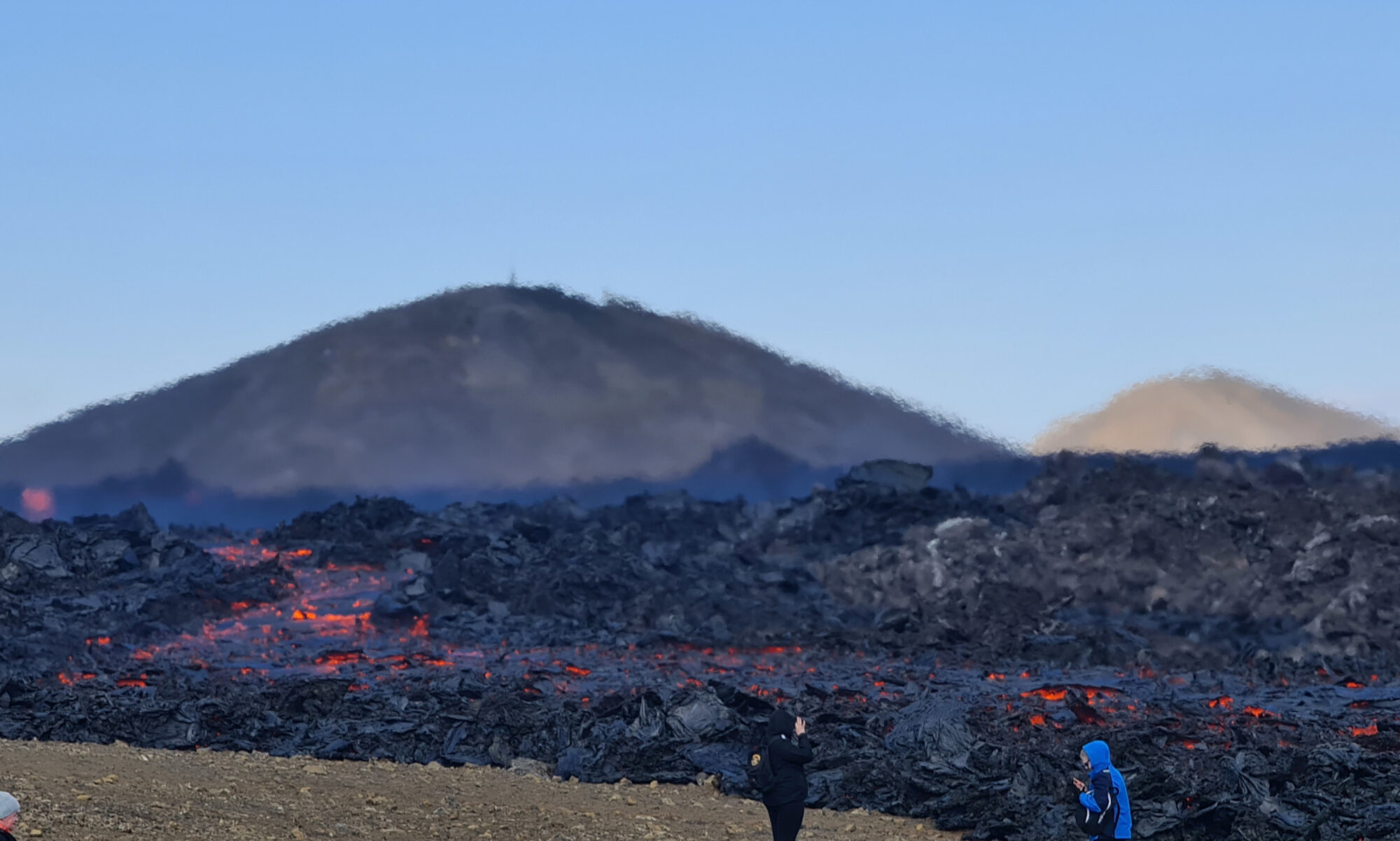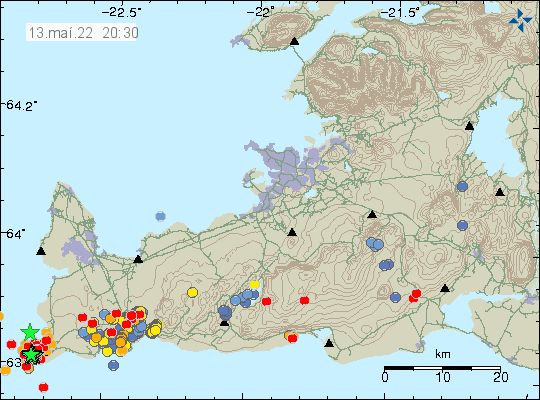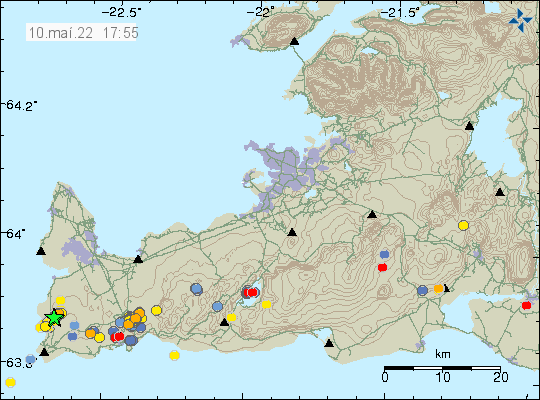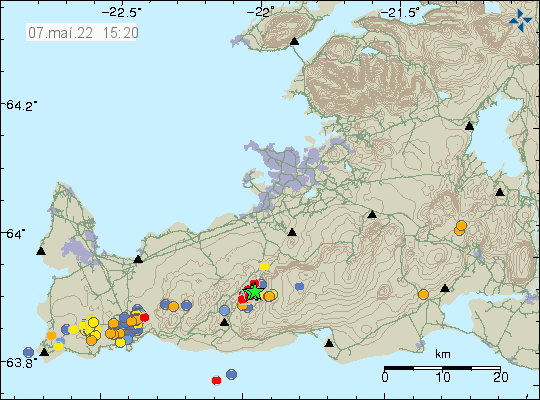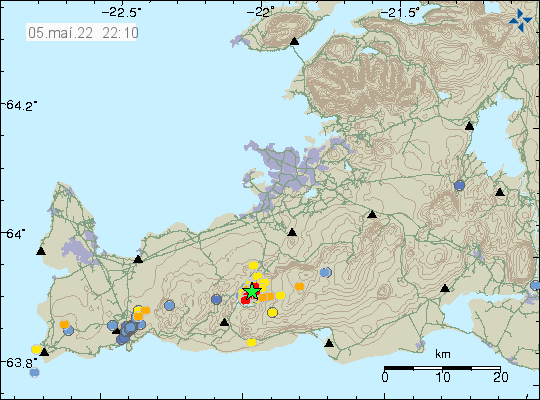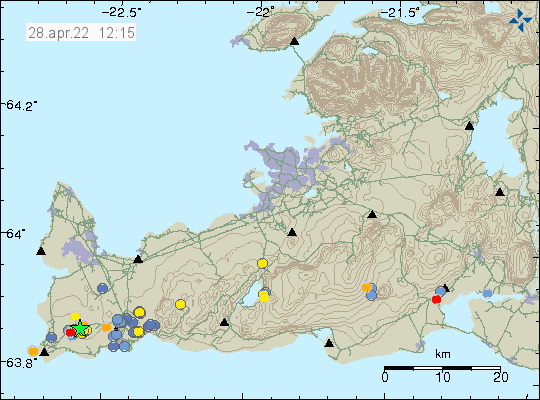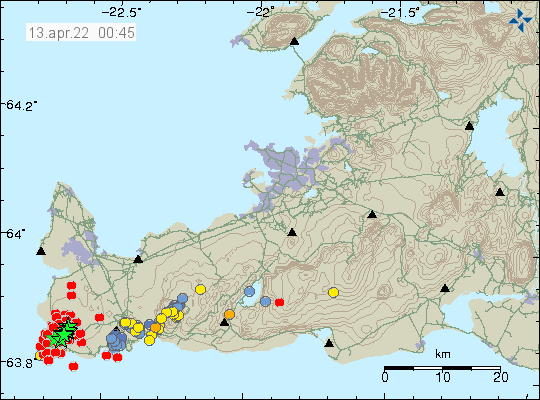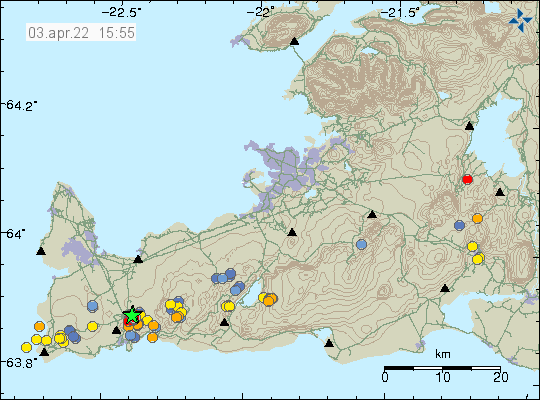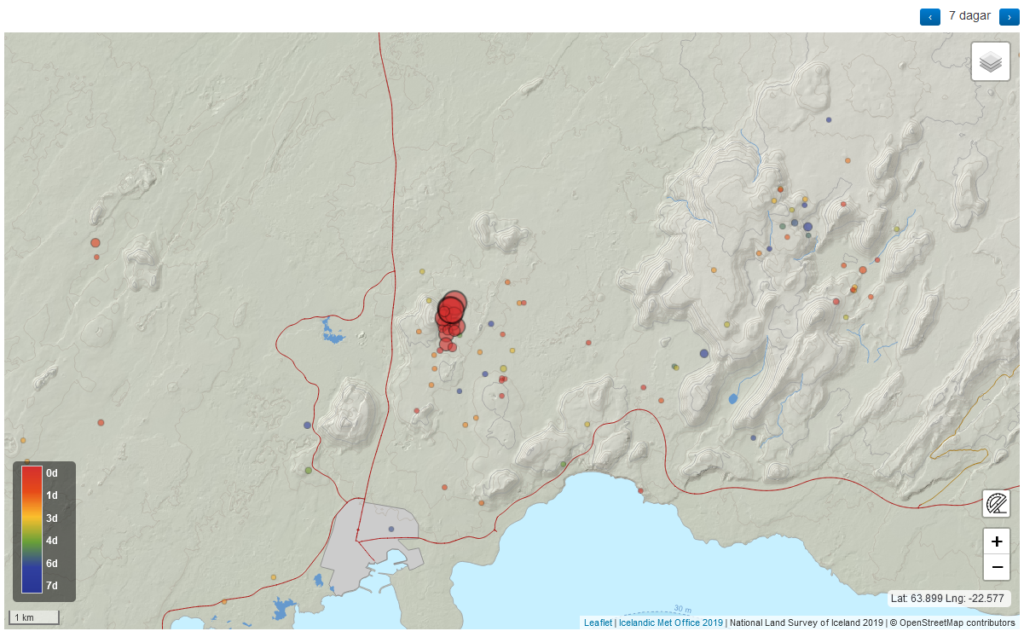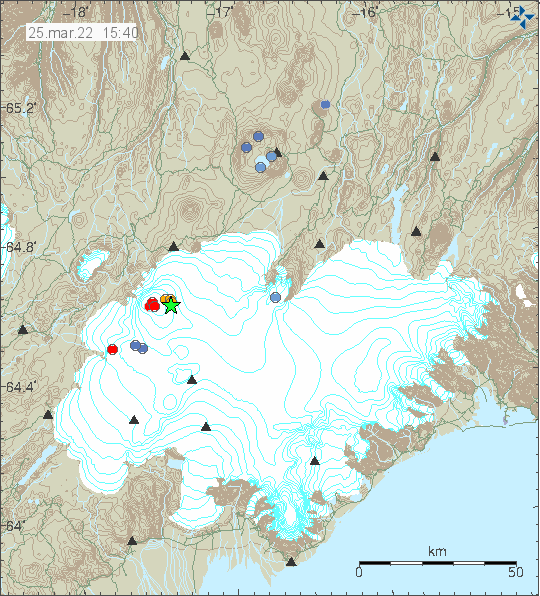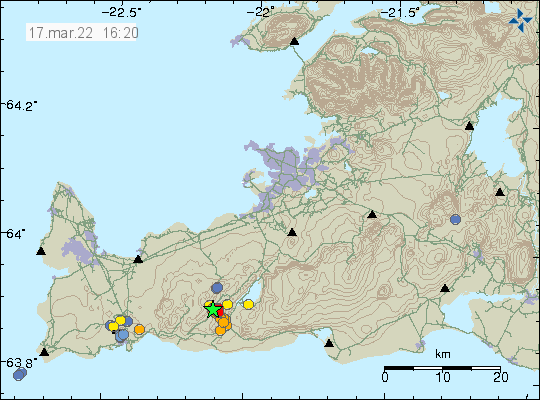Today (15-May-2022) a strong earthquake activity started in Eldvörp crater crow west of Grindavík town. Largest earthquake at the writing of this article had a magnitude of Mw4,1. Stronger earthquakes are a possibility. Total of five earthquakes with magnitude stronger than Mw3,0 have taken place since 11:00 UTC this morning. More than 100 earthquakes that are smaller in magnitude have happened since then.
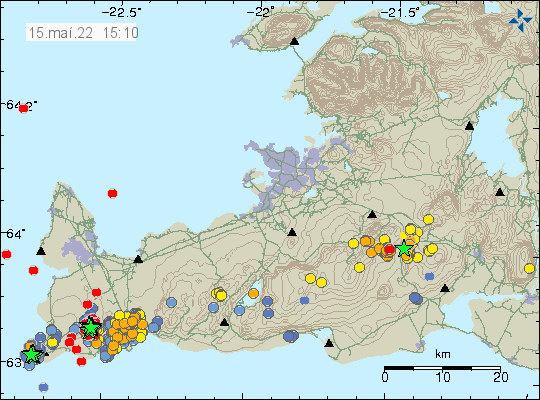
I am not seeing any clear signs that this earthquake activity is because of tectonic activity. This earthquake activity is in my personal view because of magma trying to find a path to the surface, something that it seems to struggle with. A process that was also seen just before the eruption in Fagradalsfjall mountain. The difference now is that an eruption in this area might be a magnitude or two larger than an eruption in Fagradalsfjall mountain, until an eruption starts, this is just a speculation. It is impossible to know when an eruption is going to start at this location, or if it is going to start. That is the most likely outcome of all this, but volcanoes remain unpredictable.
Donations
Please remember to support my work with donations if you can. Since donations prevent me from going broke during the month. Thanks for the support. 🙂
